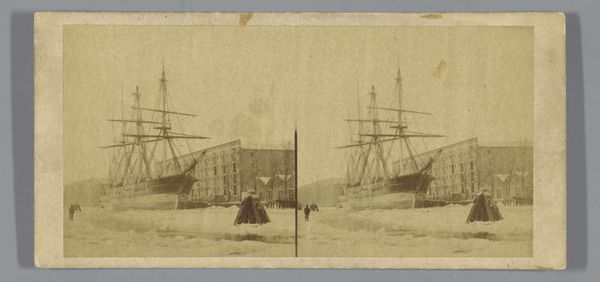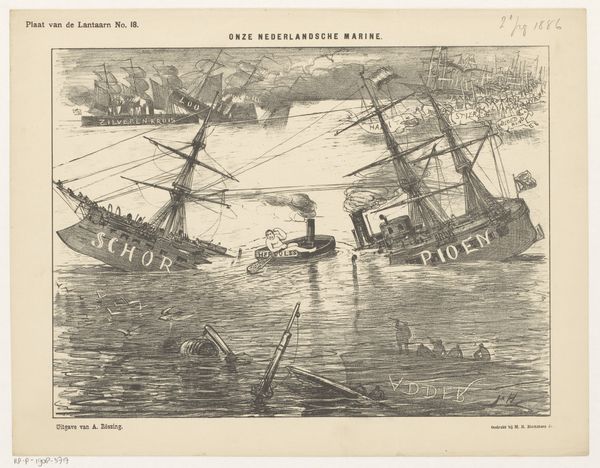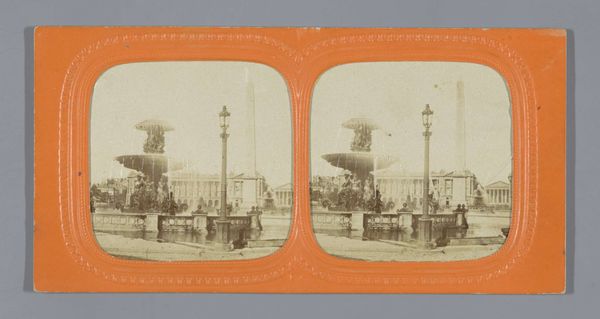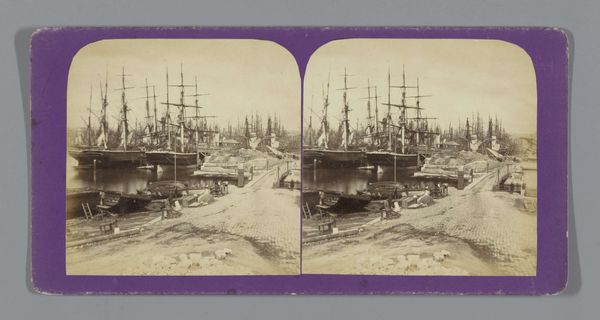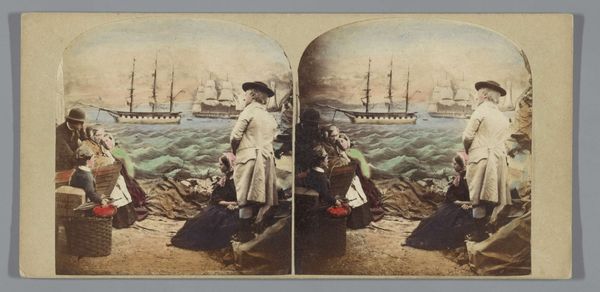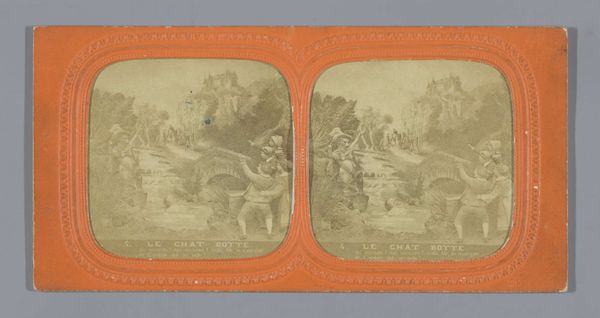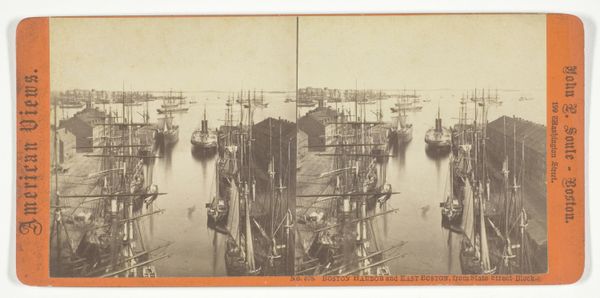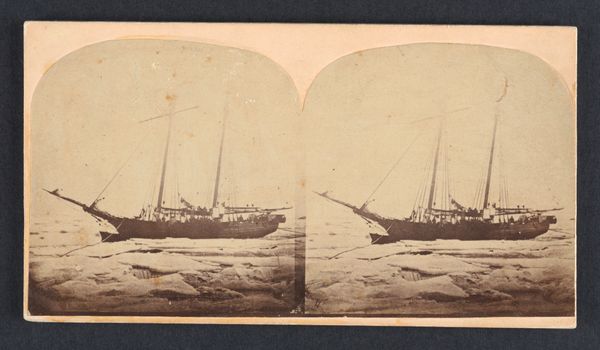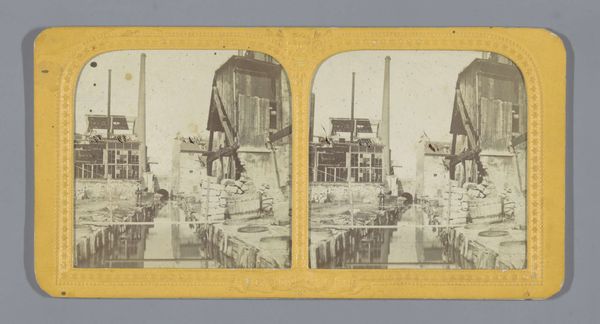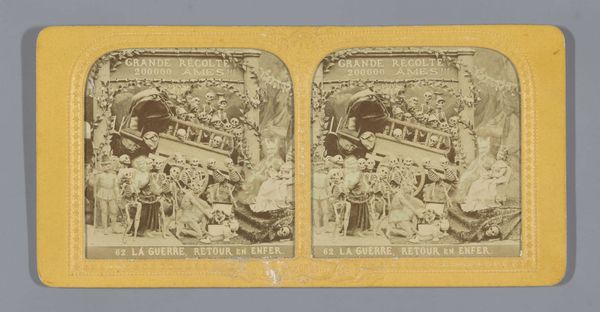
Dimensions: height 87 mm, width 177 mm
Copyright: Rijks Museum: Open Domain
This stereoscopic image illustrating Jules Verne's novel *Around the World in Eighty Days* presents a captivating scene, and was undoubtedly made using photographic techniques to create mass-produced images. The photograph is mounted on card, and shows a dramatic shipwreck, likely intended to be a moment of high tension from the story. As a stereoscopic image, it would have been viewed through a special device, giving the scene a heightened sense of realism and depth. This was a popular form of entertainment and visual engagement in the late 19th century, aligning with increased leisure time. These images were not unique artworks, but commodities, designed for mass consumption. The rise of photography and its integration into popular culture reflects the Industrial Revolution, the rise of mass production, and new markets for entertainment. Thinking about this image as a carefully manufactured object allows us to consider the relationship between art, commerce, and popular culture.
Comments
No comments
Be the first to comment and join the conversation on the ultimate creative platform.


